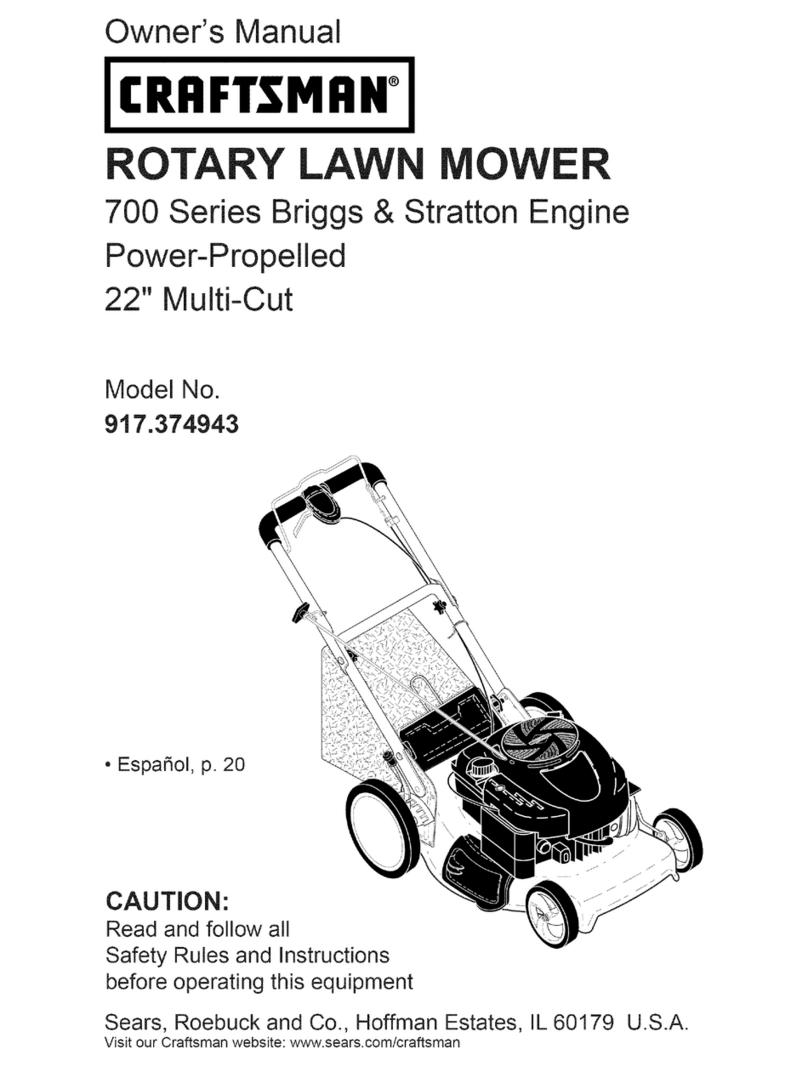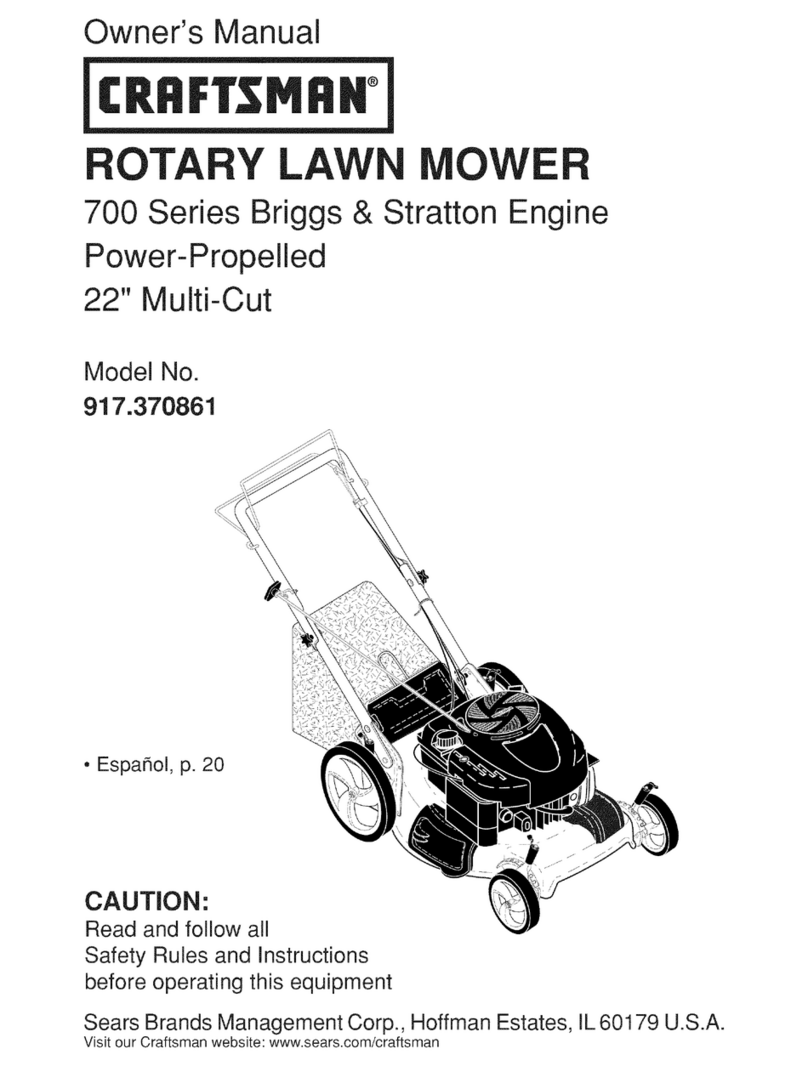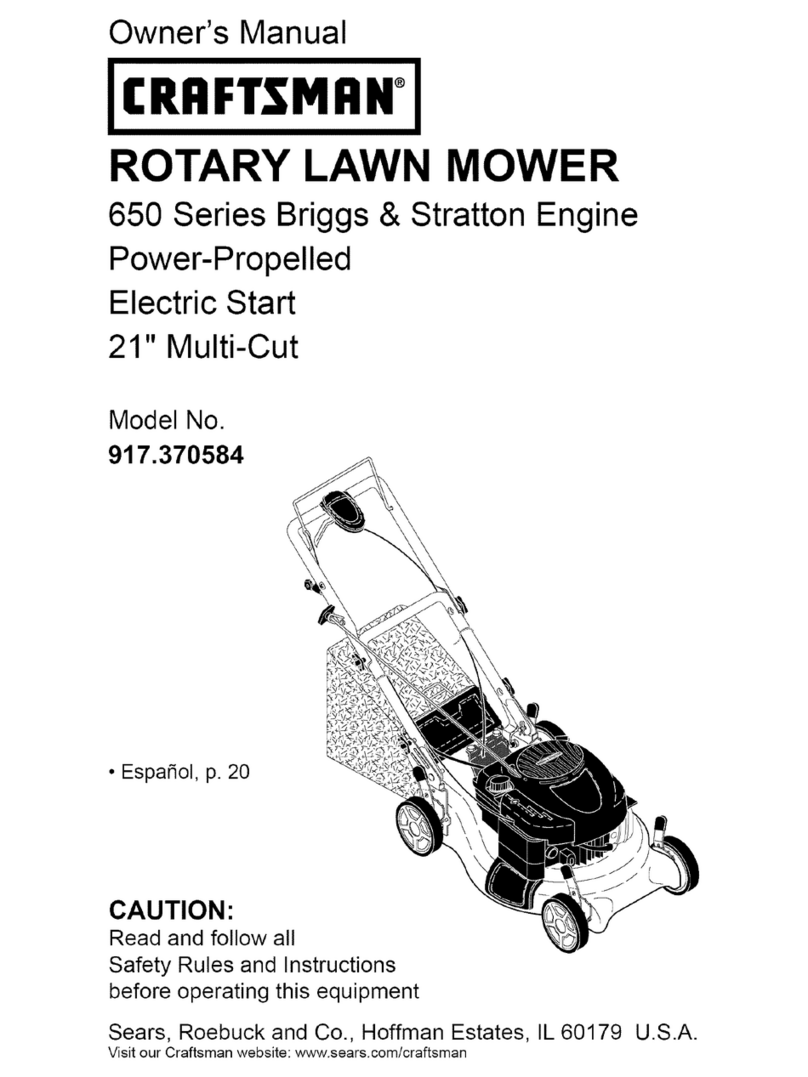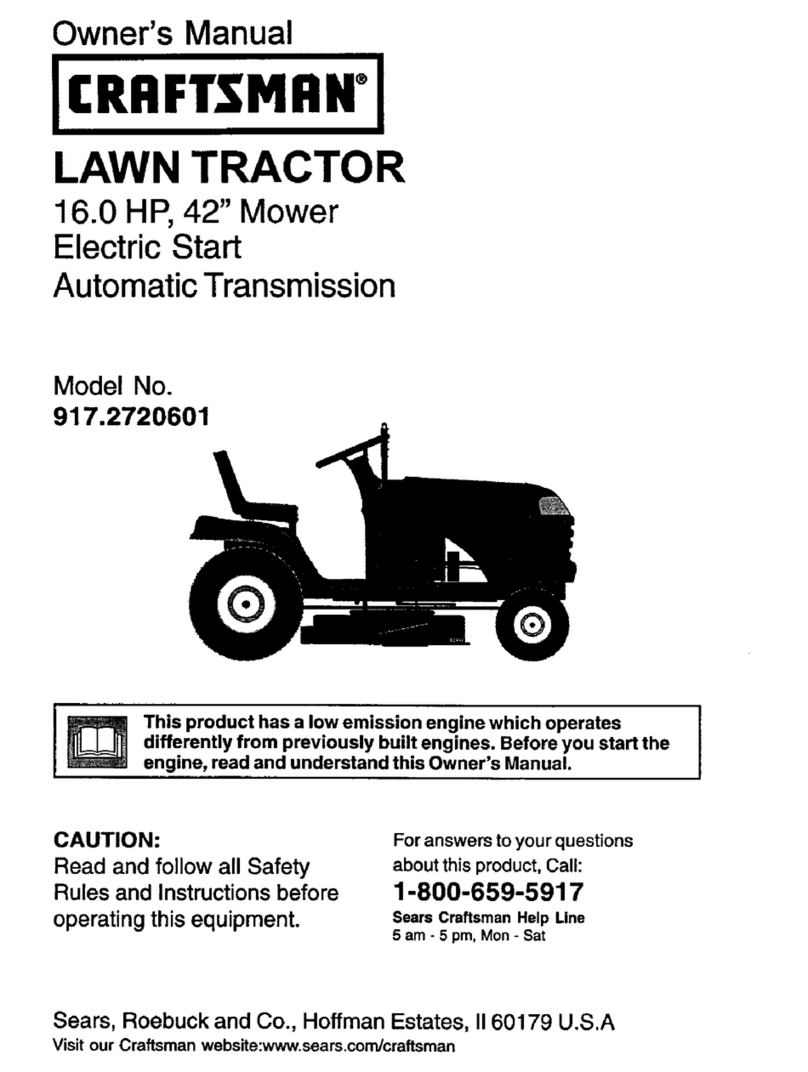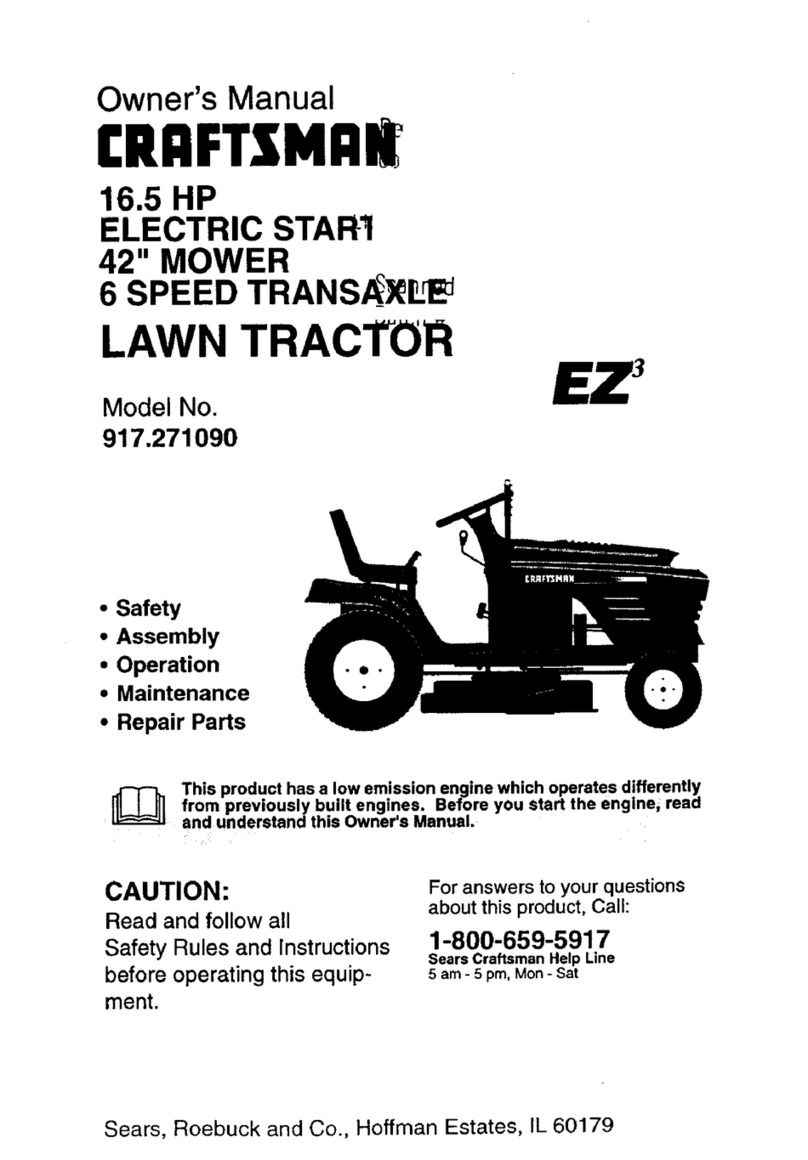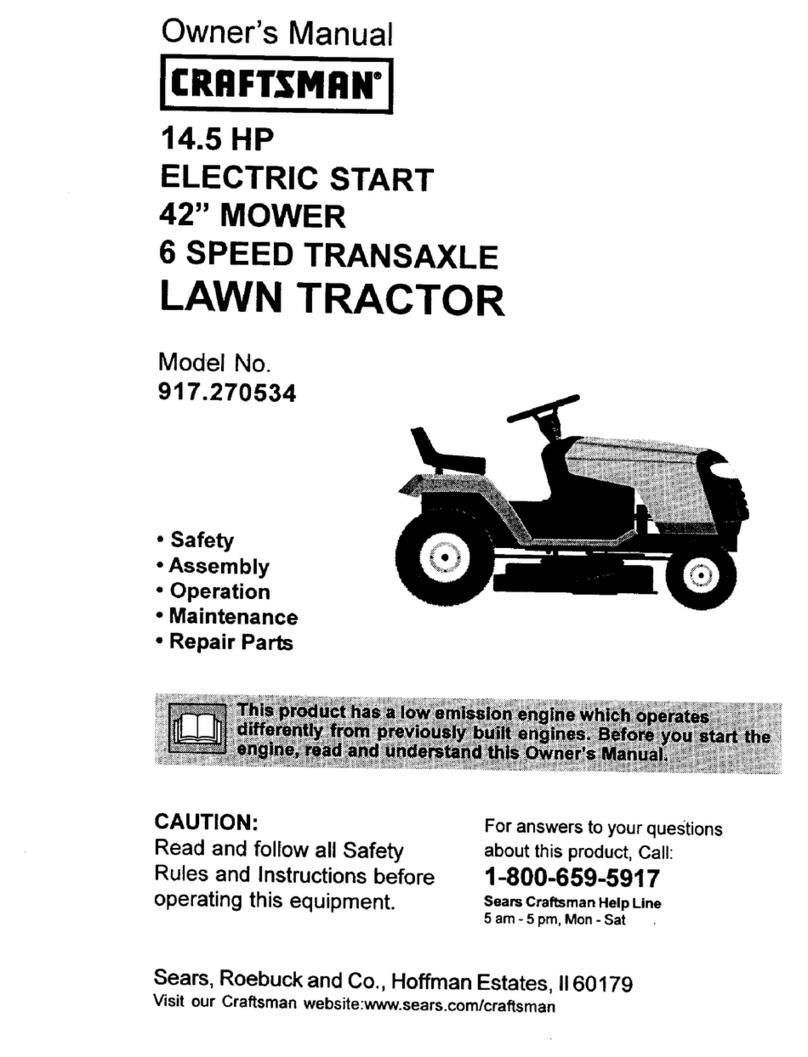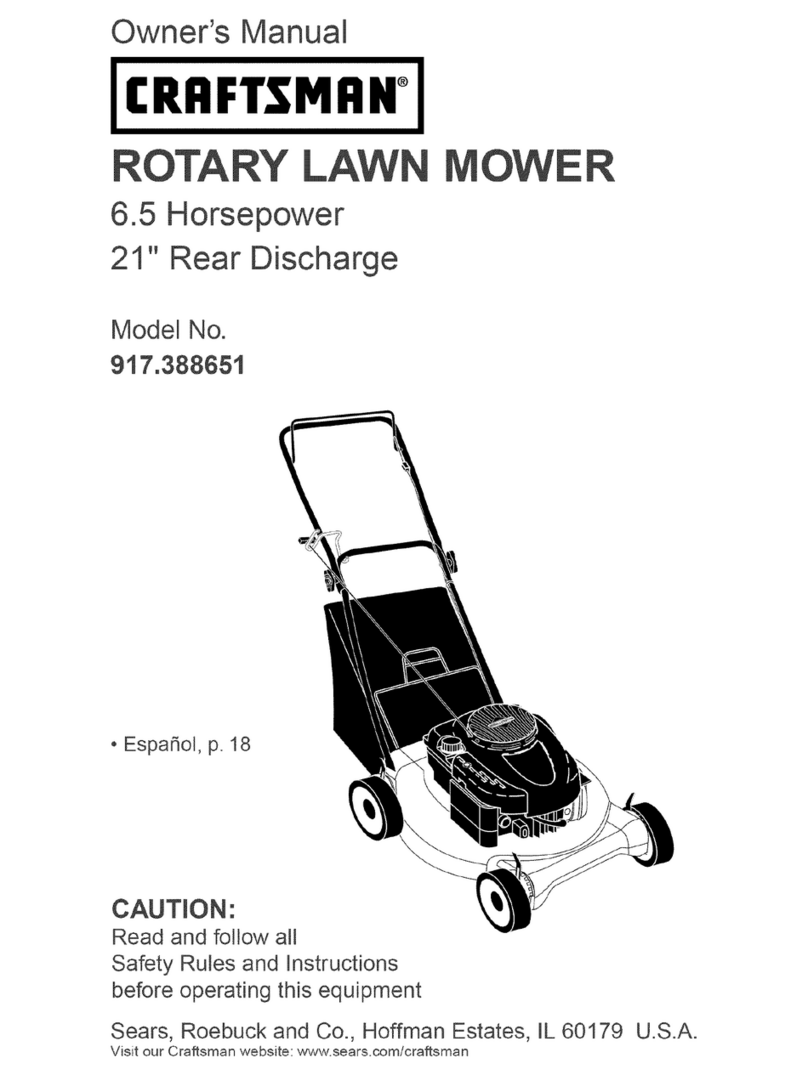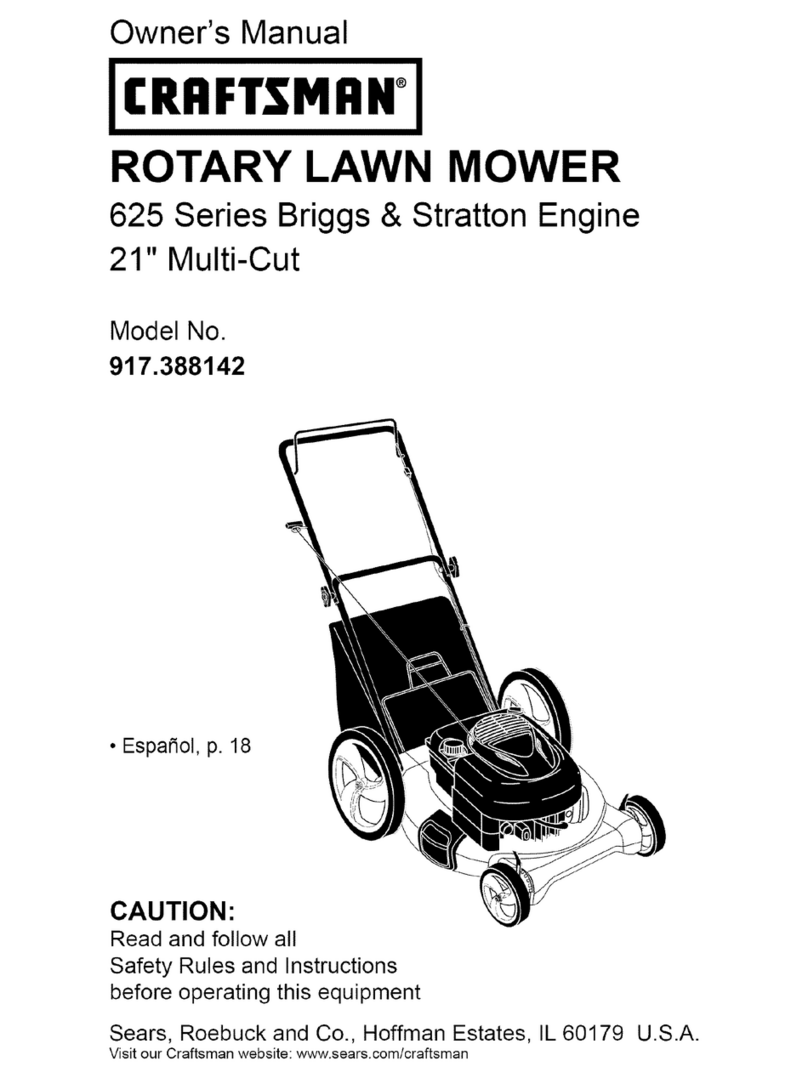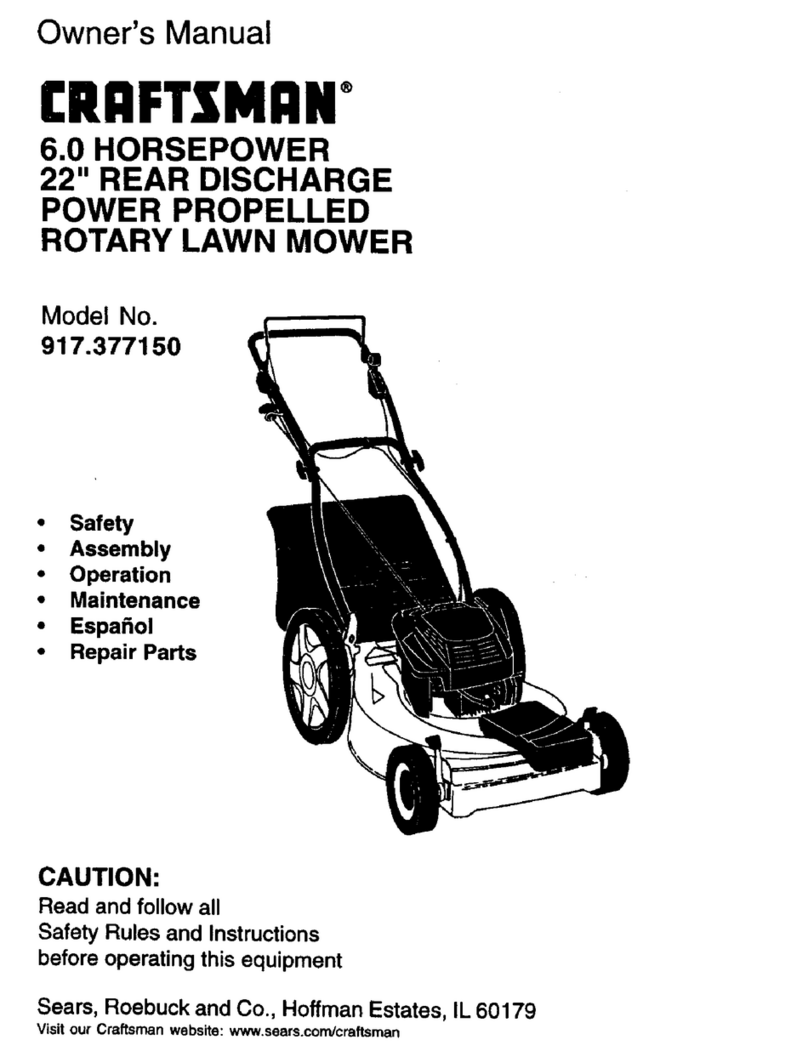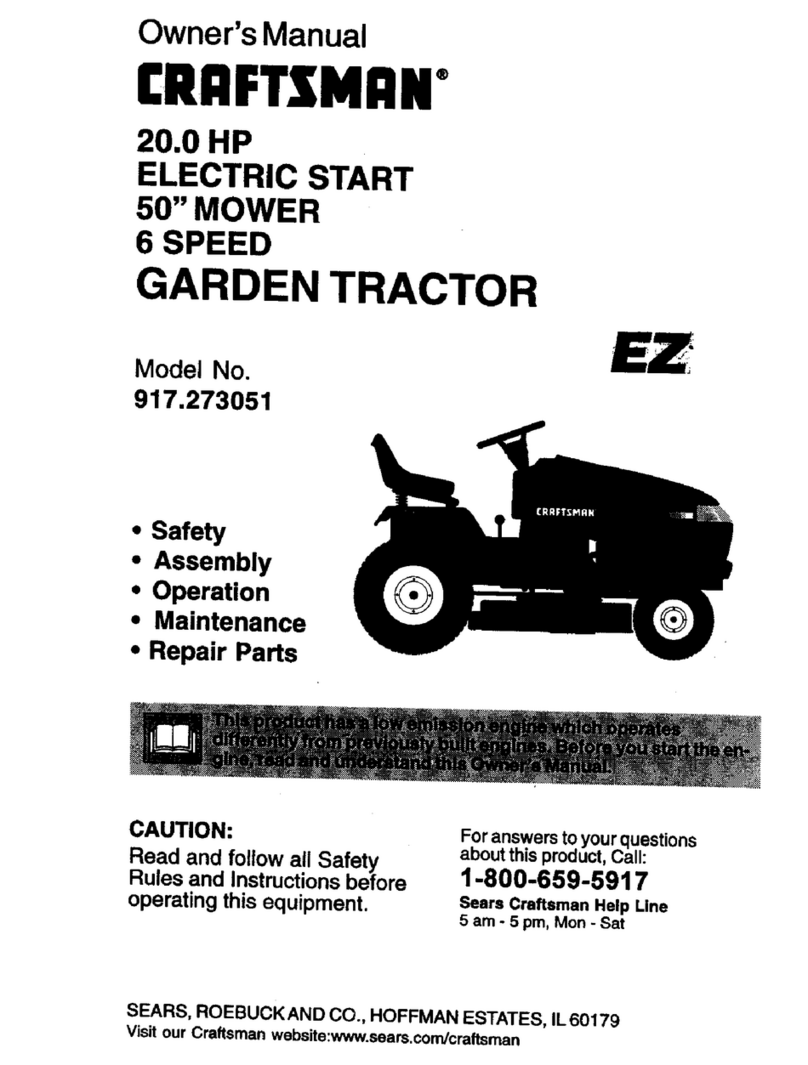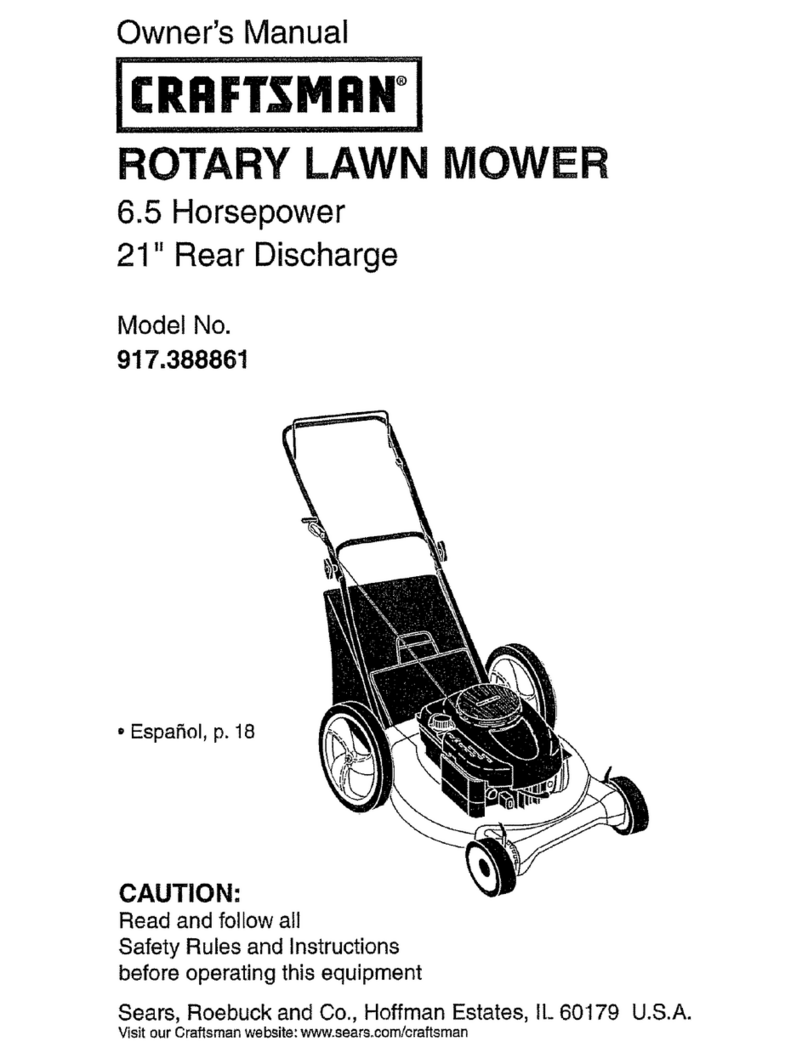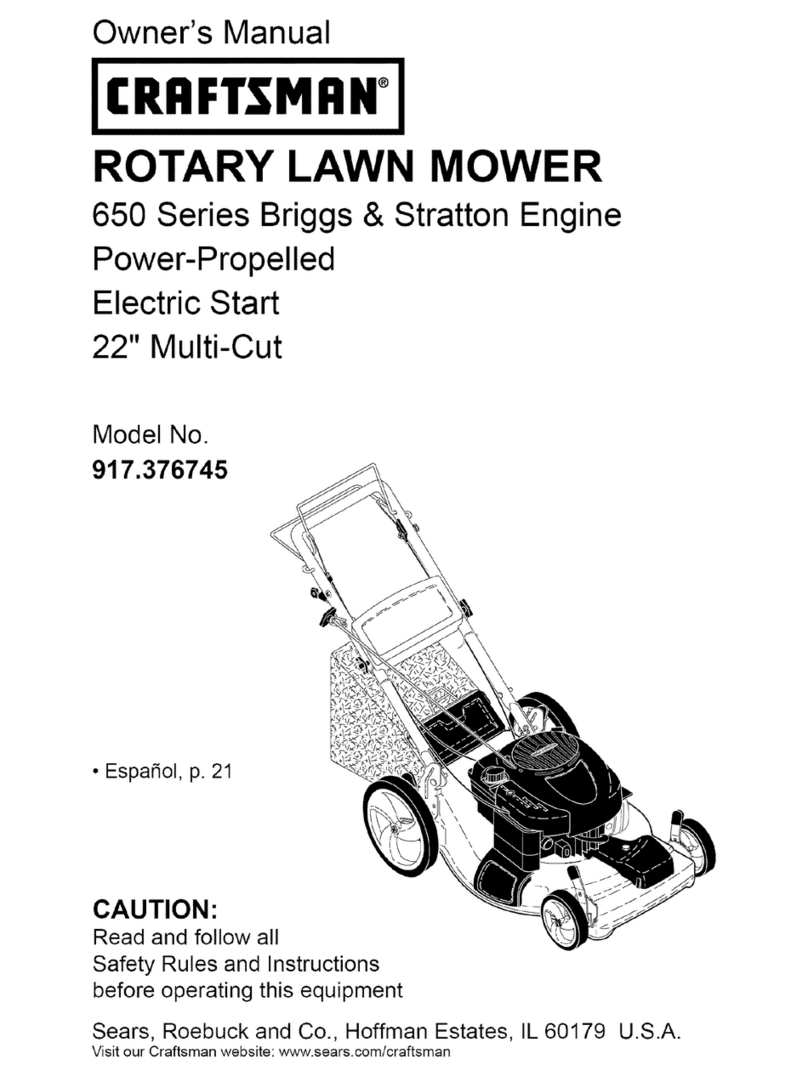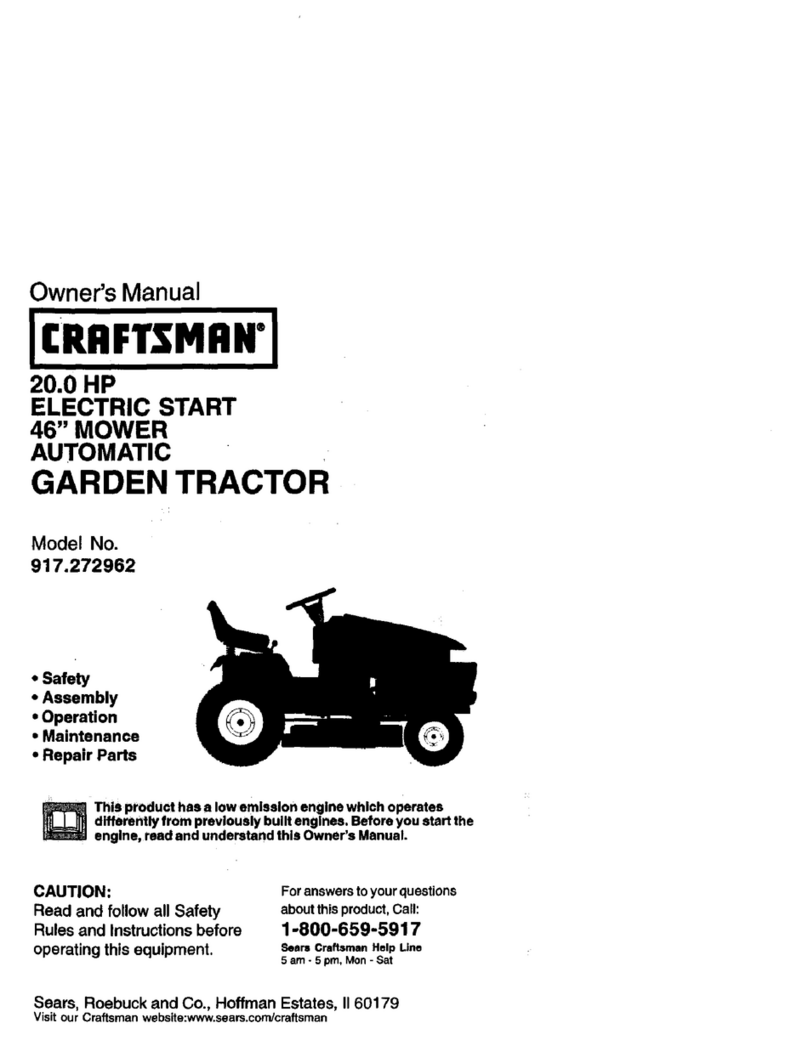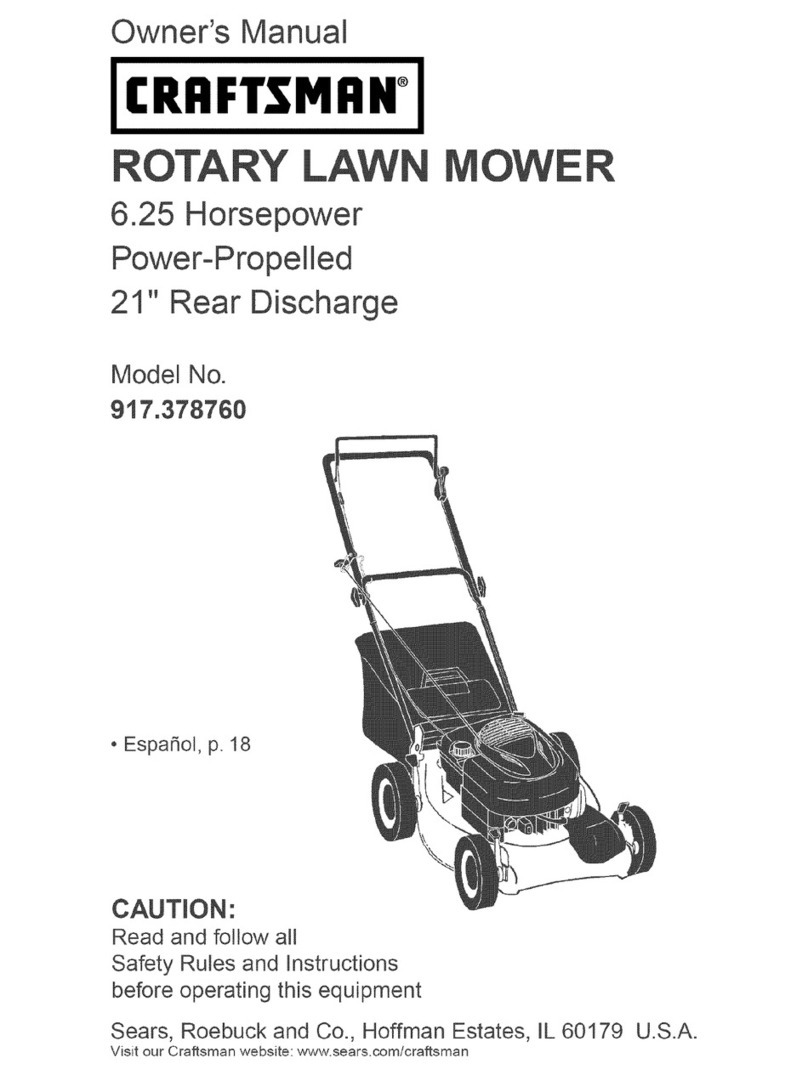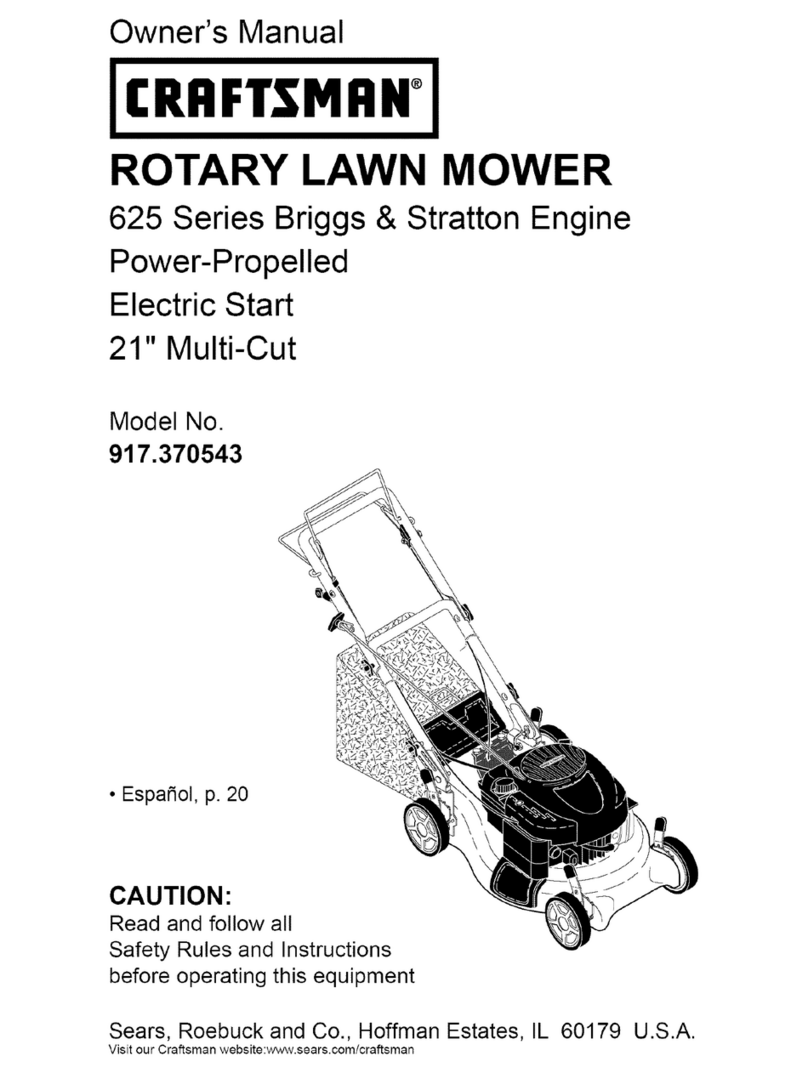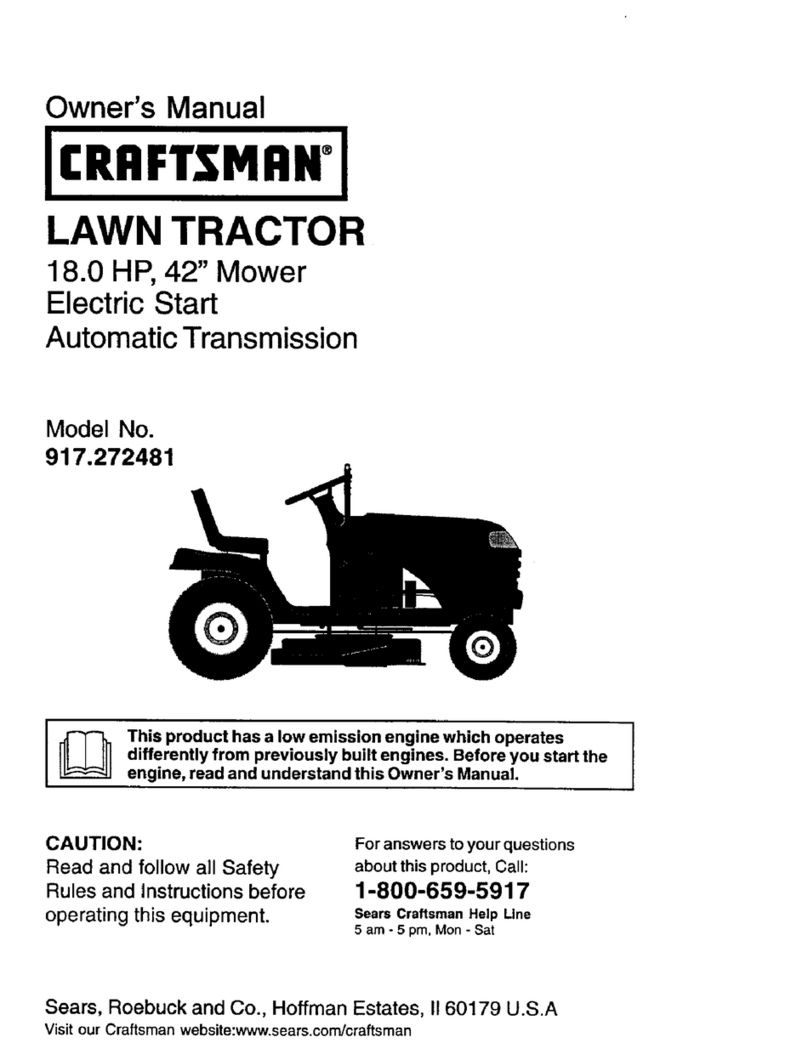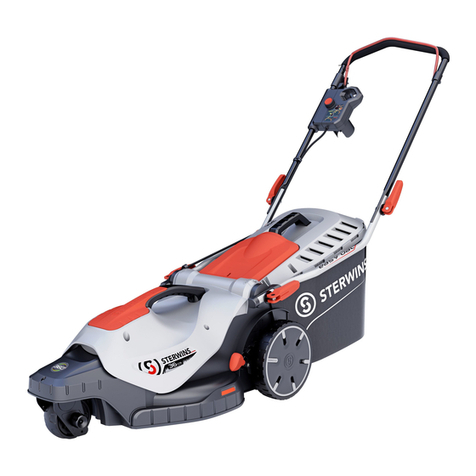to separation and formation of acids during
storage. Acidic gas can damage the fuel
system of an engine while in storage. To avoid
engine problems, the fuel system should be
emptied before storage of 30 days or longer.
Drain the fuel tank, start the engine end let it
rununtil fuel lines and carburetor are empty.
Use fresh fuel next season. See Storage
Instructions for additional information. Never
use engine or carburetor cleaner products in
fuel tank or permanent damage may occur.
TO START ENGINE
• To start a cold engine, push primer five
(5) times before trying to start. Use a
firm push. This step is not usually
necessary when starting an engine
which has already run for a few minutes.
• Hold operator presence control bar
down to the handle and pull starter
handle quickly. Do not allow starter
rope to snap back.
• To stop engine, release operator
presence control bar.
NOTE: In cooler weather it may be
necessary to repeat priming steps. In
warmer weather over priming may cause
flooding and engine will not start. If you do
flood engine, wait a few minutes before
attempting to start and do not repeat
priming steps.
MOWING TIPS
• Under certain conditions, such as very
tall grass, it may be necessary to raise
the height of cut to reduce pushing effort
and to keep from overloading the engine
and leaving clumps of grass clippings. It
may also be necessary to reduce
ground speed and/or run the lawn
mower over the area a second time.
• For extremely heavy cutting, reduce the
width of cut by overlapping previously
cut path and mow slowly.
• For better grass bagging and most
cutting conditions, the engine speed
should be set in the fast position.
•For side discharge lawn mowers, cutting
in a counter-clockwise direction, starting
at the outside of the area to be cut,
spreads grass clippings more evenly
and puts less load on the engine. To
keep clippings off of walkways, flower
beds, etc., make the first cuts in a
clockwise direction.
• Pores in cloth grass catchers can
become filled with dirt and dust with use
and catchers will collect less grass. To
prevent this, regularly hose catcher off
with water and let dry before using.
• Keep top of engine around starter clear
and clean of grass clippings and chaff.
This will help engine air flow and extend
engine life.
MULCHING MOWING TiPS
IMPORTANT: Forbest gerformance, keep
mower housing free of built-up grass and
trash. See "Cleaning" in MAINTENANCE
section of this manual.
• The special mulching blade will reout the
grass clippingsmany times and reduce
them in size so that as they fall ontothe
lawn they willdisperse intothe grass and
not be noticed. Also,the mulched grass will
biodegrade quicklyto provide nutrientsfor
the lawn. Always mulch with your highast
engine (blade) Speed as thiswill providethe
best recuttingactk)n of the blades.
•Avoid cuttingyour lawn when itiswet. Wet
grass tends toform dumps and interferes
with the mulching action. The best time to
mow your lawn isthe early afternoon. At
this time the grass has dried and the newly
cutarea will not be exposed to the direct
sun,
•For best results,adjustthe lawn mower
cutting height so that the lawn mower cuts
off only the top one-third of the grass blades.
Ifthe la.wn is overgrown it will be necessary
to raise the height ofcut to reduce pushing
effortand to keep from overloading the
engine and leaving clumps of mulched
grass. For extremely heavy mulching,
reduce your widthof cutby overlapping
previouslycutpath and mow slowly.
•Certain types of grass and grass conditions
may require that an area be mulched a
second time to completely hide the
clippings. When doing a second cut, mow
across or perpendicular to the first cut path.
• Change your cut_ng pattern from week to
week. Mow north to south one week then
change to east to west the next week. This
will help prevent matting and graining of the
lawn. :t)_..l_t_.=_- _Max 1/3
ll' li! 'lfAl lillL .L': ,
7



